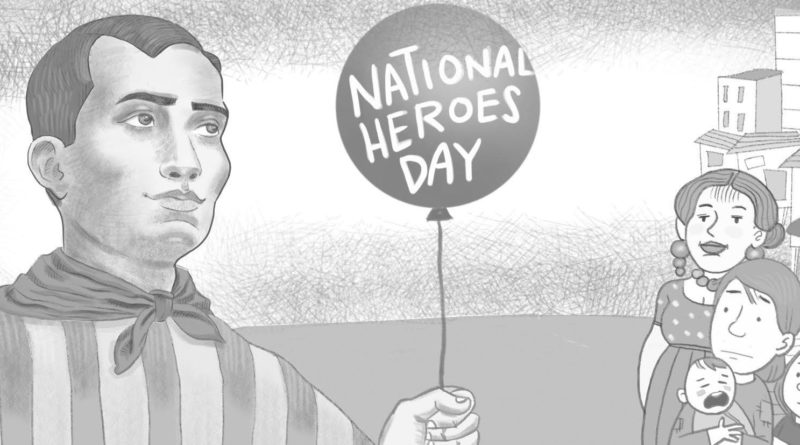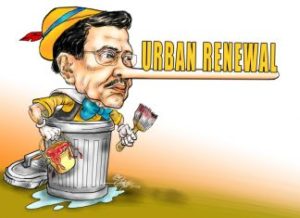OP ED EDITORIALS & CARTOONS: The Philippine Daily Inquirer –Bonifacio: ‘Fear history’
Andres Bonifacio’s letters that have come out of the woodwork have rekindled popular interest in the hero, who left us only with a faded photograph and a small collection of writings, and all to the good.
His letter to Emilio Jacinto on April 24, 1897, one of the three original letters that came from the collection of Epifanio de los Santos and were auctioned in March, reads like a page from a whodunit novel, both riveting and unsettling.
.
– SPACE RESERVE FOR YOUR ADVERTISEMENT –
.
.
In the letter that can be read online, Bonifacio gives a blow-by-blow account of the Tejeros meeting on March 22, 1897, that began with a noble agenda: to unify the Katipunan’s rival factions Magdalo and Magdiwang.
.
– SPACE RESERVE FOR YOUR ADVERTISEMENT –
.
.
But the meeting took an ominous turn when the rebels moved to turn the revolutionary movement into a revolutionary government, necessitating an election.
In that snap election, Bonifacio lost the presidency to Emilio Aguinaldo (elected in absentia) and the vice presidency to Mariano Trias. When Bonifacio was finally elected director of the interior, Daniel Tirona protested, arguing that a “learned man” was a better fit for the position. Bonifacio snapped, declared the results of the election null and void, and drew his revolver — prompting Tirona to flee — before storming out of the convention.
That defeat doomed the Katipunan and the Supremo, historians say. From there, it was downhill for Bonifacio, who was captured, tried and sentenced to death for treason, and killed on a mountain range on May 10, 1897, on Aguinaldo’s orders.
Hence, the import of these three letters to Jacinto in our study of history.
These letters, as well as the Acta de Tejeros and the Acta de Naik—two other Katipunan memorabilia that will be put on the block this weekend from the same De los Santos collection—shine some light on the tragedy that befell Bonifacio, who was devoured by the same revolution that he led against Spain.
Yet, the Supremo’s death at the hands of his fellow revolutionaries does not in any way detract from his heroism: He founded the Katipunan and started the war for independence from Spain that would give birth to the Filipino nation. Aguinaldo, in controversial remarks in 1897, disparaged Bonifacio’s valorous efforts: “It is quite true that the Katipunan instilled in us another desire—that of independence—but that desire was unattainable, and moreover it was in opposition to our sentiments.”
The Bonifacio documents nudge the present generation to study them and reflect on the twists and turns of the Philippine Revolution, including the betrayal of the revolutionaries by their own, as we ponder and map out our own future as a country. We, too, will be judged by history someday for what we did or didn’t do for that great project, and Bonifacio’s caveat remains relevant: “Fear history, for in it, none of your acts will be hidden.”
Just as well, his lifelong struggle for independence from colonial rule was a call to rage against oppression that remains resonant in our times, as oppression has taken on new forms: the wanton violation of human rights and due process, the unabated killings, the proliferation of fake news that assaults the truth and corrodes public discourse, China’s annexation of the West Philippine Sea, extended martial law, crippling poverty and social inequality, historical revisionism, etc.
.
– SPACE RESERVE FOR YOUR ADVERTISEMENT –
.
.
Bonifacio did chafe, too, at the irregularities that plagued the secret society he founded. Proof of this is the Acta de Tejeros, which Bonifacio and his supporters signed in protest at the vote-rigging that occurred in the first elections during the Tejeros convention. Aguinaldo and the rest of the elected officials of the revolutionary government, however, ignored the protest by taking their oath on the same day.
Bonifacio was born to a middle-class family in Tondo that peddled walking canes and fans, and his quiet perseverance to overcome life’s challenges serves as an inspiration. While he barely completed fourth grade to take care of his younger siblings following their parents’ death, he compensated by devouring books. His reading list was said to have included the history of the French Revolution, the lives of the presidents of the United States, the Civil and Penal Codes and international law, as well as Hugo’s “Les Misérables” and Volney’s “The Ruins, Or Meditation on the Revolutions of Empires.”
Jose Rizal’s “Noli Me Tangere” and “El Filibusterismo,” considered subversive by Spanish authorities, were likewise a source of inspiration to him.
Today, we mark Bonifacio’s 155th birth anniversary with the usual speeches and wreath-layings.
A quiet reflection on his life may be a better way of remembering.
.
– SPACE RESERVE FOR YOUR ADVERTISEMENT –
.
.
ASEANEWS EDITORIAL & CARTOONS:
7.1.DAILY TRIBUNE- Hot potato- DAILY TRIBUNE / – CONCEPT
– Manila’s lost glory
7.2. Manila Bulletin – Japan needs foreign workers in many fields
.
– SPACE RESERVE FOR YOUR ADVERTISEMENT –
.
.
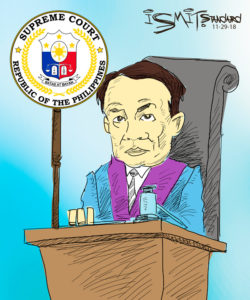
7.4 The Manila Times – JOINT OIL AND GAS EXPLORATION
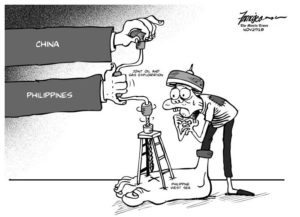

7.6 The Philippine Star – A new chief justice


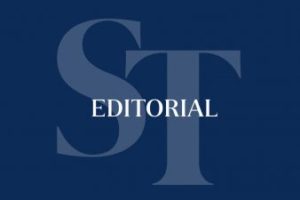
The Straits Times says:
Trade tensions point to wider concerns
The meeting of leaders of the world’s largest economies, the Group of 20 (G-20), which gets under way in Buenos Aires today, has a crowded agenda. The host, Argentina, has flagged three priorities: the future of work, infrastructure for development and a sustainable food future. China has indicated that it wants climate change to be on the agenda. France and Germany want to discuss crypto-currency regulation.
However, the highlight is widely expected to be the meeting on the sidelines of the summit between US President Donald Trump and his Chinese counterpart Xi Jinping, the outcome of which could help determine the future course of the US-China trade war which has been raging all year. The signals from the White House have been mixed. Mr. Trump has suggested that it is “highly unlikely” that the US will hold off on raising the tariffs on US$200 billion worth of Chinese imports from 10 per cent to 25 per cent from next year and that he is prepared to impose tariffs on a further US$267 billion worth of Chinese goods – which would penalise almost all Chinese exports to the US. However, subsequently, the director of the US National Economic Council, Mr Larry Kudlow, suggested that Mr Trump believed there was “a good possibility” of a deal with China, provided Beijing meets certain conditions – which helped buoy equity markets in recent days.
TO READ THE FULL ARTICLE: https://www.straitstimes.com/world/united-states/trade-tensions-point-to-wider-concerns
ADS by Cloud 9:
.
– SPACE RESERVE FOR YOUR ADVERTISEMENT –
.
.
 All photographs, news, editorials, opinions, information, data, others have been taken from the Internet ..aseanews.net | [email protected] |.For comments, Email to :D’Equalizer | [email protected] | Contributor
All photographs, news, editorials, opinions, information, data, others have been taken from the Internet ..aseanews.net | [email protected] |.For comments, Email to :D’Equalizer | [email protected] | Contributor

